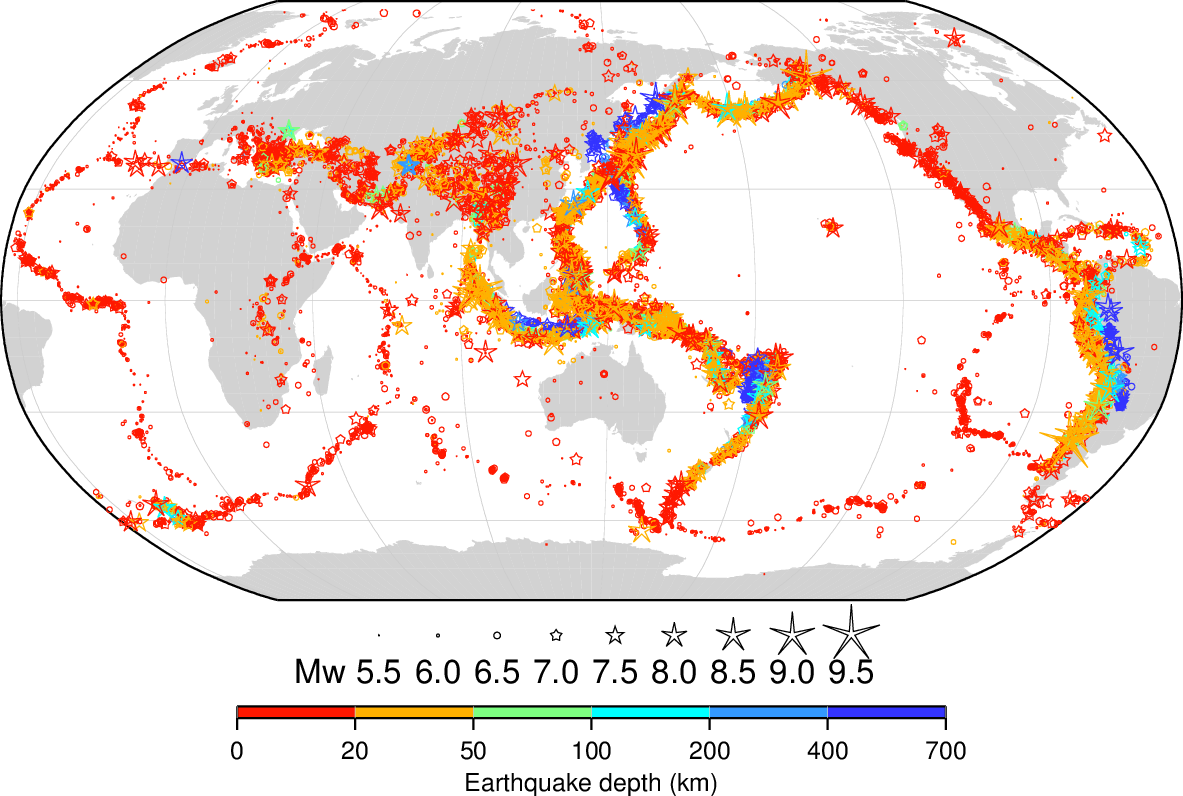
Fig.1: map showing the earthquakes listed in the version 5.0 of the ISC-GEM catalogue (more than 28,000 earthquakes, see Fig.2). The symbols are plotted according to Agnew (2014) and colour coded according to the ISC-GEM depth.
On the 27 of February 2018, the version 5.0 of the ISC-GEM catalogue was publicly released. The
release marked the end of the fourth year of the Extension Project. During this year we added to the
catalogue a) 1110 earthquakes that occurred between 1904 and 1919 (i.e., earthquakes not included in
the catalogue’s previous versions); b) 521 earthquakes with magnitude 5.5 and above that occurred in
2014.
To process earthquakes during 1904-1919 we digitized body wave arrival times as well as amplitudes
and periods for various phases using a multitude of sources to allow relocation and magnitude
re-computation (for this time period only MS) using the same approaches described in Di Giacomo et
al. (2015a). Compared to the first catalogue’s release, for this version we were able to add
amplitudes from printed station bulletins that were not available in the original ISC collection.
The additional station bulletins were kindly provided from the personal collection of Prof. N.
Ambraseys, British Geological Survey (BGS) collection, bulletins from the Geophysical Institute of
the Czech Academy of Sciences in Prague, the Geophysical Survey of the Russian Academy of Science in
Obninsk and the University of Strasbourg (France). Such an enriched bulletin collection allowed us
to add important surface wave amplitudes from different stations and to obtain for the first time MS
for many historical earthquakes and to improve the MS for large earthquakes (MS>6.0) for earthquakes
that were already listed in previous versions of the ISC-GEM catalogue.
Fig. 1 shows the ISC-GEM locations with symbols according to Agnew (2014) as obtained from the procedure described in Bondár et al. (2015). One feature that makes the ISC-GEM catalogue a unique product is that the locations (after 1903) are achieved by the same location technique and velocity model (ak135) and comes with uncertainties for each focal parameter.
Fig. 2 shows the current time-magnitude distribution of the ISC-GEM Catalogue (1904-2014).